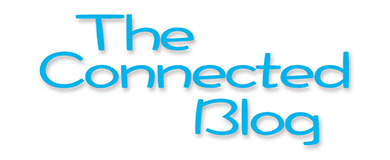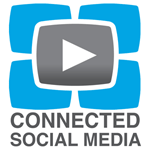Better Interviewing – II. The Most Crucial Story
Saving the best for last is often a great strategy. It seems logical to map out an interview that way, ending on a high note and leaving the audience wanting more. But, if anything, the opposite is true. The most critical part of an interview happens at the beginning. That’s when your audience is won or lost.
This idea hit home recently when I attended a wine talk by a Master Sommelier named Eddie Osterland. He preaches to dinner party hosts you have nothing to gain by waiting till later to surprise everyone with your finest bottle and a special hors-d’oeuvre. Instead, serve them first when palates are fresh and the capacity to taste and enjoy is at its height.
But there’s a more profound reason he advises to strike while the iron is hot. A fantastic wine and superb appetizer right from the start elevates the guest experience for the rest of the evening. Osterland has presided over thousands of dinner parties and he’s observed the phenomenon again and again—offer your best first, and people invest themselves more in the gathering, they have more fun, and fewer leave early.
The same idea is true of interview shows. What you serve first sets the tone for the whole show. Sweating the details of a great opening, a great guest introduction and a great first question pays off in attracting, keeping and ultimately building an audience.
Why Should Anyone Care?
When someone who’s never heard of your show tries it out, think of them as a director sitting in an empty auditorium about 5th row center, holding a clipboard… and you’re next on stage to audition.
You have about 30 seconds to show your stuff.
That’s about as much time, on average, you have to persuade the audience your interview podcast is worth their attention. For all intents and purposes you start with your largest audience at 00:00. How much smaller is it by 00:30? By 1:00? There are plenty of reasons to inspire someone to click the off button:
- Start with an ad.
- Wing it and ramble.
- Play music for a long while.
- Don’t identify the topic, guest or show.
- Read a long generic description of the show.
These can be summed up as:
- Fail to immediately tell the audience why they should care.

Granted, on the Internet any consistently published media will get some following. But to transcend that and to get people to stick with the show after they’ve clicked play, they need to be convinced they should care. And you tell them not with information but with a story, a very short one that presents a person’s challenge in a sentence or two.
For example, here’s a mundane circumstance related as information.
I went home to get my wallet so I could come back to the store to buy some great sale items.
But here it is framed as a story.
They were having a great sale at the store but when I got there I discovered my wallet was missing.
That’s a panic inducing moment we all identify with. Finding the story requires seeing the human drama in events as common as reaching for our wallet and not finding it. Sometimes a topic is about life and death—certainly, that heightens the challenge. But most topics are about the daily ebb and flow of life. Your goal is not to hype or overstate it, like a clickbait headline that doesn’t deliver on what it suggests. Rather it’s to appeal to our natural impulse to know what other people are doing through a story. Maybe the issue is whether enough rain will fall for this year’s crops or about an artist’s close call with almost choosing to become an accountant (or vice versa). In every person’s narrative abides the friction of action, change and realization.
This is what you want to capture and present in the opening of the show. You can write and voice it yourself or choose an excerpt from what the guest says in the interview. Once you start perceiving the story in events, you’ll be able to easily pick out (even as you conduct the interview) the best statements to use in the opening.
You might be asking, does it really matter that much to go to this trouble to frame the opening as a story? It depends on what results you want. If your podcast interview show is just a fun hobby, if you’re not interested in a return on investment, if the intent is just to merely make recordings and post them then by all means skip this. It’s work. But if you have something riding on your efforts to attract and serve an audience why overlook using basic techniques?
Before going further let’s get some terms down. Jargon isn’t necessary but it helps to organize one’s thinking. If the missing wallet statement were a clip from a recording it would be called a sound bite. A sound bite is more than just a sentence or phrase. It’s one that has import. Some sound bites are stories in themselves or story fragments. A compelling sound bite used as the first voice in the opening of a show is often called a teaser or at any other time in the opening it’s sometimes called a hook.
As an aside, I believe in mastering fundamentals but I also recognize the exceptions. There are probably great podcasts which violate the principles of presentation just as there are a tiny percentage of successful professional musicians who don’t practice and photographers who don’t understand the math of photography. However, there’s no blueprint. It’s not replicable for the rest of us. But the fundamentals can be learned and applied to great effect. If you want to break the rules at least first learn what it is you’re breaking.
Master Class: Oprah’s Super Soul Sunday
Oprah learned her craft as a television reporter and built an empire on understanding how to frame events in people’s lives—not as information but as stories. Although she uses plain old formulaic broadcast storytelling techniques it’s hard to argue with someone who built a billion dollar empire on it. Here’s an opening to Oprah’s interview show called Super Soul Sunday. Can you spot the story? How about the hook?
OPRAH: Today, on Super Soul Sunday, she is the ultimate seeker, someone who loves the big questions as much as I do; best-selling author, thinker, teacher and a friend; Elizabeth Lesser is here.
LESSER: Cheers!
OPRAH: For a long awaited heart-to-heart under the oaks in my backyard. Can you share with the Super Soulers what you have been through? A family crisis put the spiritual trailblazer to the test.
LESSER: It takes someone almost dying, for me to come into a whole and loving relationship.
OPRAH: How Elizabeth was able to dig deep, drawing on everything she knows and how digging deep can help you too.
The Super Soul Sunday opening is 2 minutes long but Oprah sets the hook at 23 seconds: “A family crisis put the spiritual trailblazer to the test.” Then Lesser completes the conflict-resolution scenario: “It takes someone almost dying for me to come into a whole and loving relationship.” It’s a two sentence story shouldering the argument of why the audience should care.
The interview itself is pretty basic. It’s in her back yard for crying out loud. But in the show opening she serves up a compelling story (not just one but multiple ones), an excellent use of voice-over, music dynamics and editing. It’s as if Oprah invited us in, immediately popped open a nice bottle of Sandhi Santa Barbara County Bentrock Chardonnay with hors-d’ouevres of scallops in truffle cream. It elevates the experience of the whole show. The audience invests more of themselves, they have more fun watching, and fewer leave early.
Your show opening doesn’t have to be as fancy as Oprah’s. Hers didn’t require much in resources but it did take some editing. The soaring music and choreographed voice-over adds to the drama but it’s not absolutely necessary. The attention-getter is the story, which is critical to attracting, keeping and building an audience. In the next part of this series we’ll discuss story the next short story you need to tell in the opening moments of the show that helps to launch the interview onto the wide open sea of the conversation.
###


